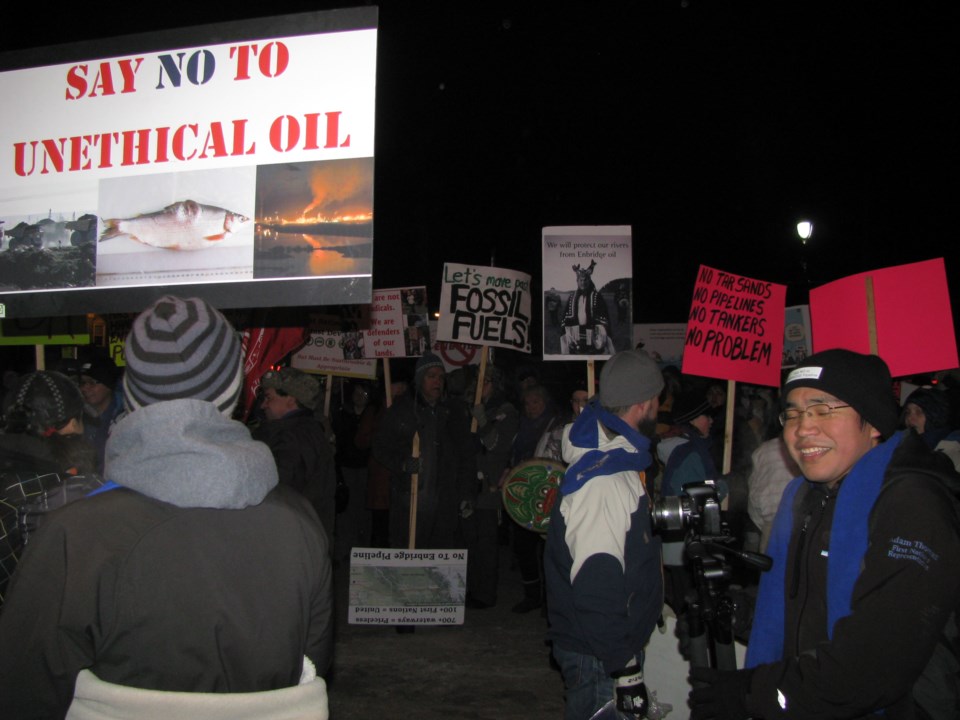What was lacking in fireworks was made up for in science, when a public hearing into the Enbridge Northern Gateway pipeline was held in Prince George on Wednesday night.
The evening was dominated by a presentation from two Prince George engineers - Christopher Peter and Norman Jacob - who set out their calculations for an "energy return on investment" on a barrel of bitumen extracted from the Alberta oilsands and shipped to China for processing.
The hour-long presentation took the joint review panel through a lengthy series of estimates of the amount of energy, equated to barrels of oil, it could take to extract the crude, pump it the 1,177 kilometres to Kitimat, ship it to China and refine it into various products.
Also taking into account the energy it could take to secure the condensate needed to thin the crude enough to send it through the pipeline, they concluded that each barrel of oil consumed during the process will produce 2.41 barrels of end product.
In contrast, they said processes that involve conventional extraction end with 14 barrels of product for every barrel consumed, and, in the 1930s, the ratio was 100 to one.
Although still better than one-to-one, Jacob pointed to studies that suggested anything below three-to-one is not sustainable once other factors are accounted of and noted carbon emissions from the oilsands process were not included in the calculations for the pipeline proposal.
Jacob maintained that going to such an extreme only shows the need to turn onto a "softer energy path" based on renewable resources.
"We have a second chance," Jacob said.
"It is our view that the proposed pipeline will facilitate development most certainly down the hard path.
"We must ask ourselves whether this is the legacy we wish to leave to our children."
In an interview following the presentation, Northern Gateway Alliance chair Colin Kinsley said he was disappointed an hour of public hearing time was spent on technical data. He said a separate process is in place for such presentations where cross examination is allowed.
"In an oral presentation, that's not the point," Kinsley said. "The point is to hear local knowledge, local concerns, their own opinions and thoughts perhaps, but not the things that are of a technical nature."
Peter and Jacob also received a scolding from the panel after they completed their presentation, saying the hearing was not an appropriate venue for the presentation.
But they also received a standing ovation from the 350 people who packed a ballroom at the Ramada, many of them standing or sitting on the floor.
Just prior to the start of the hearing, about 50 showed up at the hotel with placards against the pipeline but had to leave them in the lobby.
Only one other presentation was given and the hearing lasted about 90 minutes in total.
It opened with Gary Ducommon of the Metis Nation of B.C. who gave a history of the Metis in northern B.C. and then expressed concerns about the impact the pipeline may have on traditional culture.
The pipeline will pass through several watersheds, he noted, and warned it may have a detrimental impact on salmon runs already stressed enough by existing development.
Any further stress "may tip the salmon over the edge," he said.
The panel will decide by late 2013 whether to allow the $5.5-billion proposal to go ahead.



